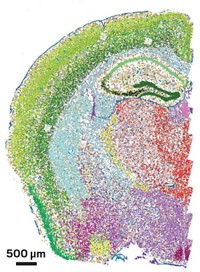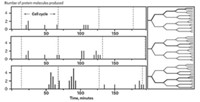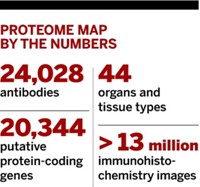Advertisement
Grab your lab coat. Let's get started
Welcome!
Welcome!
Create an account below to get 6 C&EN articles per month, receive newsletters and more - all free.
It seems this is your first time logging in online. Please enter the following information to continue.
As an ACS member you automatically get access to this site. All we need is few more details to create your reading experience.
Not you? Sign in with a different account.
Not you? Sign in with a different account.
ERROR 1
ERROR 1
ERROR 2
ERROR 2
ERROR 2
ERROR 2
ERROR 2
Password and Confirm password must match.
If you have an ACS member number, please enter it here so we can link this account to your membership. (optional)
ERROR 2
ACS values your privacy. By submitting your information, you are gaining access to C&EN and subscribing to our weekly newsletter. We use the information you provide to make your reading experience better, and we will never sell your data to third party members.
Analytical Chemistry
Counting Proteins
Proteomics: Single-molecule methods quantify bacterium’s proteome
by Celia Henry Arnaud
August 2, 2010
| A version of this story appeared in
Volume 88, Issue 31

Researchers have quantified a significant fraction of the Escherichia coli proteome with single-molecule sensitivity in single cells (Science 2010, 329, 533). Such sensitivity allows quantification of proteins present at low abundance.
“It’s the first time any proteome has been characterized with single-molecule sensitivity,” says team leader X. Sunney Xie, a chemistry professor at Harvard University. “This allows us to evaluate protein levels across the entire range of protein expression.” Xie likens the analysis to counting people in a census.
Paul J. Choi and Huiyi Chen, graduate students in Xie’s lab, constructed a library of E. coli strains, with each strain containing genetic instructions to tag a different E. coli protein with yellow fluorescent protein (YFP). Using single-molecule fluorescence microscopy, postdoc Yuichi Taniguchi counted the YFP-tagged proteins to determine how protein expression differed across a population of genetically identical cells. The team found that 20% of E. coli proteins are expressed at extremely low levels, averaging less than one copy per cell. So far, they have measured the levels of more than 1,000 different E. coli proteins.
When they analyzed the cell-to-cell variation, or “noise,” in protein production, the researchers found that the randomness of single-molecule biochemical processes dominates at low protein-expression levels. The statistical distribution of protein abundance depends on the messenger RNA production rate and the number of proteins generated per mRNA. At high expression levels, however, other factors such as heterogeneity of the mRNA production rate from cell to cell can account for the variation.
Jeff Hasty, a bioengineering professor at the University of California, San Diego, calls the work “a milestone in the ongoing efforts to understand how cells function when their constituent molecules exhibit a large degree of randomness.” He notes that “the finding that a large number of intracellular proteins are present at extremely low copy numbers implies that stochastic effects are ubiquitous and highlights the importance of incorporating random fluctuations into quantitative descriptions of cellular function.”
In addition, Gene-Wei Li of Xie’s team simultaneously measured proteins and their corresponding mRNA. This analysis revealed that at any given time the amounts of a protein and its corresponding mRNA are uncorrelated. Xie and coworkers attribute this finding to differences in the lifetimes of mRNA and protein, with mRNA counts representing the most recent history, a minute or two before the measurement, and protein counts reflecting the distant past, time periods comparable to the cell cycle.
“The authors’ approach is likely to be most reliable at low protein numbers, where noise effects are the strongest,” says Terence T. Hwa, a biophysicist at UCSD. “It will be interesting to apply this approach to study some relevant biological problems in depth.”





Join the conversation
Contact the reporter
Submit a Letter to the Editor for publication
Engage with us on Twitter